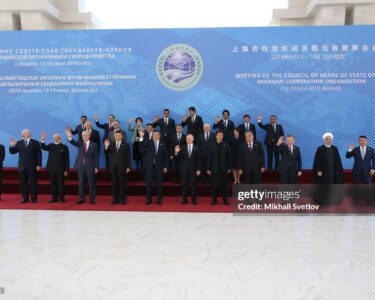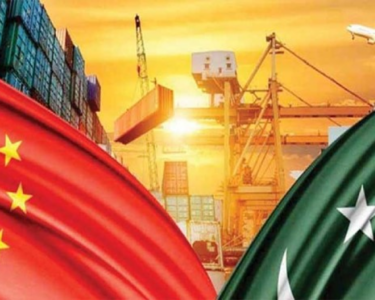The China-India border dispute is one of the longest running territorial conflicts in the world with roots dating back to the 1962 Sino-Indian War. The tensions have been escalating in recent years, with both countries engaging in a series of military standoffs and diplomatic rows. The implications of these tensions are far-reaching, disturbing the regional security and the global balance of power.
In 2024, the tensions between China and India have shown no signs of abating. Both nations have faced standoffs along their disputed border with each side making the other responsible for acts of aggression. The situation has become more intricate with the involvement of neighboring countries such as Pakistan, which shares ties with China and the United States, which has been strengthening its partnership with India. These complex interactions form a web of alliances and rivalries heightening the possibility of misunderstandings and further escalations. The escalating conflicts have led to outcomes that affect not security but the broader economic and political spheres worldwide.
The China India border tensions are impacting security with both nations increasing their spending to upgrade their forces significantly. India is enhancing its air force capabilities by acquiring Rafale fighter jets and expanding its presence in the Indian Ocean. Meanwhile China is prioritizing skills development and advancing missile technologies. This escalation in buildup has disrupted the power dynamics and led neighboring nations such as Nepal and Bhutan to enhance their defense spending in response to these developments. Countries, like Bangladesh are also grappling with the dilemma of having to take sides amidst this scenario. Tensions are set to rise in China and India as movements near their disputed border raise concerns about the potential for conflicts to erupt.
The tensions between China and India have also caused impacts as the trade partnership between the two nations has been impacted by the border conflict. While economic interdependence serves as a warning to escalation, which led to boycotts of Chinese goods in India and stricter investigation of Chinese investments. This has had a ripple effect on regional supply chains and can possibly disrupt global trade flows. The tensions have led to a deterioration in foreign investment in the region, as investors become increasingly wary of the risks associated with investing in a region with such high levels of tension.
The ongoing border disputes between China and India have not impacted politics. Have also strained relations between China and the United States as the US has extended support to India in this matter. China views this support as an attempt to limit its progress and escalates tensions between these nations further. Furthermore, the trade tensions between the US and China contribute to the complexity of the situation. The escalating conflicts between China and neighboring nations like Japan and Australia are also linked to China’s growing power in the area. The formation of the Quad – a dialogue involving the United States, India, Japan and Australia – highlights the unity of these countries, against China’s increasing control.
The ongoing border disputes between China and India are not a matter of security. Also have significant implications for human rights in the regions near the contested territories affected by these tensions. Instances of rights violations such as restrictions placed upon freedom of expression and movement are indeed concerning to witness. Additionally the forced relocation of communities due to actions and development initiatives serves to underscore the cost of this conflict.
The border conflicts among China-India remain unresolved due to a mix of background and geopolitical factors intertwined with domestic politics that make reaching a consensus challenging. The widespread impact of these tensions is evident as they affect security significantly and play a role in shaping the economy and political landscape extensively. To effectively address the conflicts between China and India. Maintain peace in the region. Both countries, around the world, should engage in talks at high government levels that include confidence building measures such as military collaborations and new methods for managing border security effectively. The international community should back dialogues and mediation efforts approved by both parties to avert any consequences stemming from these tensions. It is crucial to secure a resolution to maintain stability in a region that significantly impacts peace and prosperity.
The ongoing conflict along the China India border is complicated by the terrain and harsh weather conditions in the Himalayan region where precise borders are not clearly defined and differing interpretations of treaties and agreements sow distrust that hampers the establishment of an accepted Line of Actual Control (LAC). This ambiguity can lead to misunderstandings. Increase the likelihood of escalation in tensions between the two countries Using technologies such as satellite imagery and drones, for border security improvements could inadvertently raise tensions by heightening the risk of misinterpretation and miscommunication regarding each other’s actions.
The repercussions of the border dispute extend beyond trade and financial consequences to also hinder efforts in tackling issues like poverty and inequality in both countries involved. The ongoing tensions resources that could have been utilized to address these urgent challenges. Additionally the heightened military presence in border regions puts a strain on infrastructure and resources for the welfare of the local communities living there.
The rivalry between China and India goes way beyond economic aspects; they are vying for power not only regionally but also globally. China’s ambitious Belt and Road Initiative is an infrastructure venture designed to link Asia with Europe and Africa. This initiative has raised eyebrows in India due to concerns about projects passing through areas that India claims as its territory. Viewed through India’s lens, the BRI is seen as a move by China to bolster its influence while encircling India in the process. The ongoing rivalry to establish superiority within the region intensifies the border disputes. Introduces a level of intricacy to their connection.
The environmental impact of the border conflict is an issue that must not be ignored or underestimated. Increased activities in the Himalayan region result in harm due to deforestation and loss of habitats caused by the construction of roads and military bases. The area’s vulnerability to climate change along with effects like melting glaciers and changing weather patterns worsens pre existing problems. Collaboration on conservation efforts in border regions could foster trust between countries, potentially reducing tensions. The shared concern for water security related to rivers that flow from the Himalayas offers an opportunity for cooperation through engaging in discussions.
China and India border tensions are a complex and multifaceted issue, with significant consequences for regional security, the global economy, and politics. The resolution of these tensions necessitates a concerted effort from both nations involving discussions, at the levels and the implementation of confidence building measures. Additionally the international community is called upon to offer assistance and direction to aid both countries in overcoming their disputes.




